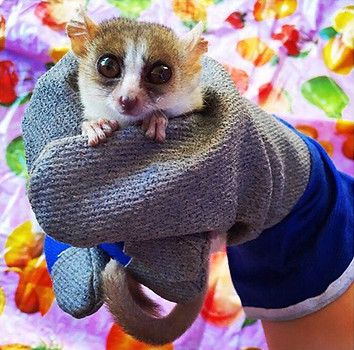The Mouse Lemurs of Madagascar
Investigating species-specific personality traits
Study Summary
The ever-growing human population is increasing the global demand for resources. As a direct result of human activity, many habitats are being destroyed and with it, the animals and plants that naturally occur there. Unfortunately, many species are now at risk from extinction or are experiencing severe declines in their populations.
Madagascar has lost more than 90% of its original forest cover in the last 2000 years and many of its iconic species are now at risk, including members of the charismatic Lemuridae family. To identify the basic requirements a species needs to survive, it is important to understand how an animal behaves in its natural surroundings. For example, knowing an animal’s territorial range can directly influence the amount of land designated to a protected zone and hence increase the success of conservation efforts.

A grey mouse lemur (Microcebus murinus) during the handling aspect of my study. ©Lara Jackson | @lara_wildlife
Mouse lemurs are the smallest primates in the world, making them easy to handle and an ideal study specimen. In northwestern Madagascar, grey (Microcebus murinus) and golden-brown (Microcebus ravelobensis) mouse lemurs live in the same region and both experience the same level of environmental pressures and human disturbance. Differences in species, sex and body mass can be easily evaluated and may be linked to behavioural differences. To assess these differences, personality traits like boldness and shyness were analysed.
To facilitate this study, lemurs were captured in humane, Sherman Live traps and species, sex and body weight noted. Simultaneously, the behaviours displayed during human contact were recorded and quantified to provide a measure. Observations were further enhanced by noting behaviours on release from the traps and how both species of lemur fed on artificial feeding platforms. Statistical analyses of the data gathered allowed comparisons of personality traits across both species.
This study found that during the release phase, species, sex and body mass affected behaviours. However, during the handling context and platform observations, these factors did not affect behaviour. Other trends have been found in further studies, suggesting that with more research, a better understanding of how these factors influence an animal’s personality can be achieved.
Behavioural knowledge can be directly applied to conservation efforts in Madagascar by designating protected areas and educating local people on the consequences of habitat destruction. Furthermore, this information can be used to enhance the welfare of endangered animals in captivity which is vital as the ultimate aim of captive breeding programmes is to successfully reintroduce animals to the wild.
Abstract
Individual behavioural variation (the prerequisite of personality) is attributed to traits usually found in qualities associated with fitness. Therefore, personality can influence an animals’ ability to respond to its environment and ultimately survive; this is highly relevant considering the anthropogenic threat of slash-and-burn agriculture which is fragmenting
habitats in Madagascar.
Several factors that can influence an animals’ personality, including age and sex, were investigated in two sympatric species - the grey (Microcebus murinus) and golden-brown (Microcebus ravelobensis) mouse lemur. They exhibit niche separation by avoiding direct competition for resources such as food and safe sleeping-sites. Resulting from these adaptations, the two species exhibit different personality traits (like predator avoidance techniques).
This study aimed to investigate whether there was intraspecific and interspecific behavioural variation in the responses of mouse lemurs.

A golden-brown mouse lemur during the handling aspect of the study. Photographed and © by Michael Darling.
